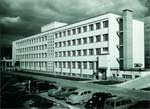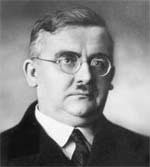About us
Tradition

The basis and vision of the Institute's work were laid down by Milan Vidmar, the respectable Doyen of the Slovenian electric power engineers, world-wide recognised chess-player, Rector of the University of Ljubljana, President of the Slovenian Academy of Sciences and Arts during the second world war, and the founder of the today's Slovenian Electric Power Research Institute. It was quite early that he realised that enabling efficient development of the technologically extremely demanding electric power system will necessitate participation of competent specialists devoted to pursuance of highly set professional standards. Being a top-level world-wide known and acknowledged specialist, he was offered several times to set up and manage various institutes worldwide (Prague, Berlin, Vienna, Moscow). But what he was really looking forward to was the day when he was finally able to establish his “own”, Slovenian, electric power research institute.
The Institute formally started operating on 1 June 1948 after being established on 21 May 1948 by the Ministry for Electricity Supply Economy of the Federal Republic of Yugoslavia. In 1950, the Federal Ministry’s Committee decided the Institute to fall within the competence of the Ministry for Electricity Supply Economy of the Republic of Slovenia and in the same year within the competence of the Slovenian Academy of Sciences and Arts. In the period 1955 - 1958 it was promoted into a scientific institution. It soon expanded its activity to encompass also the field of electrical industry and was named the Institute for Electricity Supply Economy and Electrical Industry. To acknowledge the merits of its founder, in 1968 it was renamed into "Elektroinštitut Milan Vidmar", Institute for Electricity Supply Economy and Electrical Industry. To the non-Slovenian speakers it is known as the "Milan Vidmar Electric Power Research Institute", or by its abbreviated name EIMV.

At the Institute’s foundation, its fields of activity and development targets were laid down by Prof. Dr. Milan Vidmar. The latter were of such a long-sighted character that they still provide a solid platform for the today's Institute's work. There were ten people employed at the Institute at the time. After working in temporary premises, in November 1952, the Institute moved into a new, for that time very modern, building enabling it to capture and respond to the needs of the entire country, i.e. the Federal Republic of Yugoslavia, which after 1991 gradually disintegrated into five independent states, one of which is the today’s Slovenia.
The experts of the Institute contributed to the post-war electrification of the entire Federal Republic of Yugoslavia, to the planing and development of the power network enabling the interconnection between individual power sources and users, the completion of the 110, 220 and 400 kV networks, the connection of the 220 kV network with SUDEL, the connection of the 400 kV network with the European interconnection, the optimisation of planning, construction and exploitation of power sources and networks in Slovenia, the construction of the Krško nuclear power plant, the implementation of higher standards for electricity quality, and the modernisation of procedures and the adoption of new technologies in the Slovenian electric power system.

